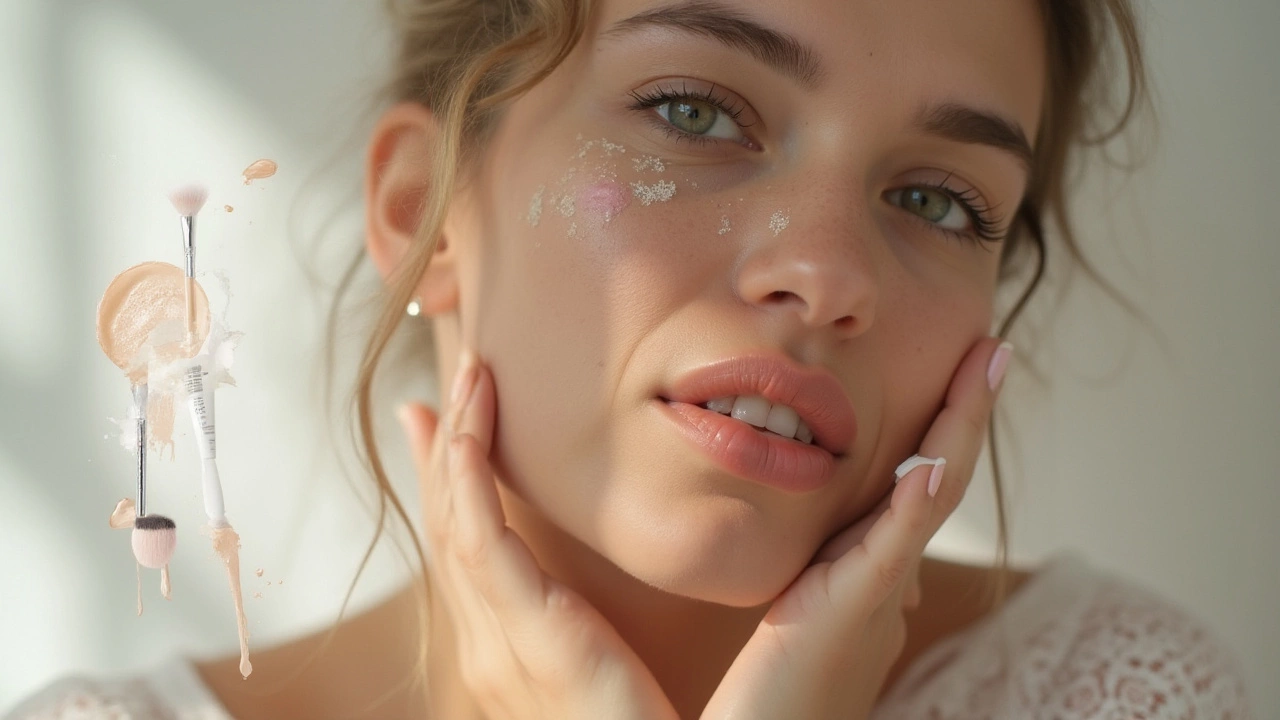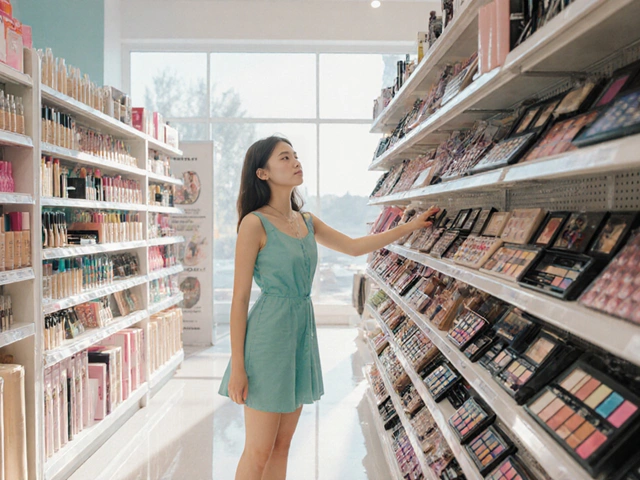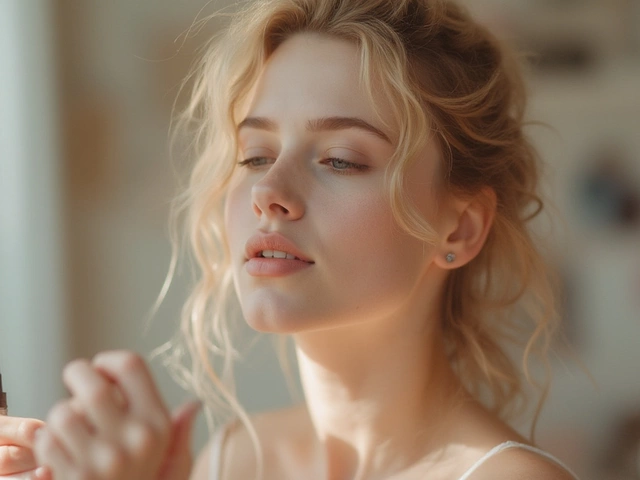Imagine buying the perfect lipstick or foundation, only to look in the mirror and realize something just isn’t working. That feeling of frustration is all too familiar and can turn excitement into a rush to wipe it all off. The truth is, most makeup mishaps don’t start with choosing the wrong shade or trending technique—they start with ignoring the first, most important rule of makeup. What’s the rule? It’s not about following trends or loading up on expensive products. It all begins with skin—fresh, clean, well-prepped skin. No product can cover up roughness, dryness, or oiliness. Makeup is only as good as the canvas underneath. This foundational idea doesn’t just change how you approach your routine; it influences how makeup looks, feels, and lasts on your face.
Why Skin Prep is the Real First Rule
You might be surprised how many makeup artists, from those working backstage at Fashion Week to those doing bridal glam on a Saturday morning, agree on this one thing: your makeup is only as good as your skin prep. Makeup legend Pat McGrath calls skin "the base for beauty." If your face is dry, oily, flaky, or dirty, even the most high-end foundation will slip, crease, or look uneven. This doesn’t mean you need a 10-step routine, but skipping prep is a one-way ticket to patchy, dull makeup.
Cleansing is your first step—always. A recent survey found that up to 30% of people admit to sometimes applying makeup without washing their faces first. Wonder why foundation feels heavy, or why pores seem obvious? It’s build-up from old makeup, pollution, sweat, and oil blocking a smooth application. After cleansing, exfoliate a few times a week for smoothness. Makeup artists on photo shoots keep a little texturized facial pad on hand, because a couple of gentle sweeps can make every product go on like a dream.
Next comes moisturizer. Even people with oily skin need one—dryness just ramps up oil production, which then makes your makeup melt. Applying moisturizer and then waiting 5-10 minutes before makeup helps create a balanced, hydrated base. Skin that’s well-moisturized and plumped naturally "grabs" product better, and prevents caking or streaking. Never rush this step. Fun fact: According to a 2024 Swedish study, applying foundation on well-moisturized skin increased wear time by up to 27% compared to skipping moisturizer.
Primers are the last step for those who want extra longevity. The right primer (hydrating, mattifying, or smoothing) fills pores, blurs imperfections, and can create a tacky base, so your foundation hugs the skin for hours. A lot of people say, ‘Primers don’t work for me.’ But dermatologists note that not every primer suits every skin type; you have to match the formula to your needs.
Here’s a quick routine checklist to start right every time:
- Cleanse with a gentle face wash
- Exfoliate if needed (2-3 times per week, not daily!)
- Apply moisturizer suited to your skin type
- Let it absorb
- Prime if you want extra staying power
Skipping these steps is like painting over a dirty wall—sure, you can do it, but it never looks quite right.
Application Techniques Matter—But Only if You Nail the Basics
If you’ve ever scrolled TikTok or Instagram and wondered how people get flawlessly blended eyeshadow or the glowiest skin, the real secret isn’t just fancy brushes or expensive highlighters. It’s how they prepare their canvas and respect the order of application. Always start with the face and move to the details. Lay down a base and then build up. It’s a bit like making a sandwich—you can stack on the tastiest ingredients, but stale bread will ruin the whole experience.
Start your routine with a small amount of product. Blending is not just a buzzword; it’s your best friend. For foundation, using a damp sponge or soft brush lets you buff in pigment rather than cake it on. Light layers prevent cakiness and let your real skin peek through; heavy-handedness can instantly age or flatten your features. Powder should be used with intention—right areas, right amount. A tip from pro artist Lisa Eldridge: Press powder into the skin only where you get shiny (usually the T-zone) and skip cheeks if you want a fresh, dewy look.
When it comes to blush and bronzer, placement is crucial. Blush on the apples brings a youthful flush; along the cheekbones gives structure. Always sweep upward for a lift—not straight across, which can drag the face down. Bronzer goes in the hollows and along the jawline, not all over the face. Subtlety works wonders. It’s easy to overdo pigment, but hard to take it off once it’s there.
Eye makeup is where artistry comes in. Start with a shadow primer for real staying power and truer color payoff—a simple swipe keeps shadow looking fresh through hot days and long nights. Use a transition shade (something close to your skin tone) to blend out harsh lines. For liner, place the tip between lashes for a natural look and tightest line. Mascara should be rolled at the root, not just swept, for lift and definition. My secret? Hold a mirror at chin level—this gives you a better angle for symmetry. Brows deserve the same thought; brush them up and fill in only where needed with quick, hairlike strokes.
Lipstick is always more striking when lips are prepped. Use a soft toothbrush to exfoliate, apply lip balm, and blot before color. Outlining lips with a shade close to your natural color prevents bleeding and keeps things tidy. If your lipstick smudges easily, lay a single-ply tissue over your lips and dab through with a brush and translucent powder—celebrity artists swear by this for red carpet looks.
These techniques, while trendy, only work well on prepped skin. You’ll notice products perform better, blend smoother, and last longer. Want proof? In a 2024 Allure Magazine makeup test, identical looks were applied to prepped and unprepped faces—and 87% of observers preferred the photos with prepped skin, calling them "softer" and "more natural."

Choosing Makeup That Works with Your Skin
Foundation, concealer, powder—these basics can take you from "just rolled out of bed" to “ready for anything.” But using products that don’t work for your skin type will make all the prep in the world pointless. Dry skin with matte foundation? Instant flakiness. Oily skin with dewy formulas? Shine show by noon. The trick is matching product to need and season.
Here’s a quick product guide:
- If you look matte and patchy by lunch, try switching to a hydrating foundation or a light BB cream.
- If makeup slides off your face by 3pm, reach for stick foundations or mattifying primers designed for oily skin (look for niacinamide or clay on the ingredient list).
- For sensitive skin, stick to fragrance-free, non-comedogenic options—product labels aren’t just for show.
- Got redness or unevenness? Green-tone correctors neutralize red; peach tones take down purple (like under the eyes). But less is more—use color correctors sparingly and layer foundation on top.
- Here's a cool technique: Warm up cream products (like concealer or cream blush) with your finger before applying. The slight heat makes them melt right in.
Recent data from Statista in June 2025 shows that nearly 68% of beauty shoppers now check online reviews before choosing a product. Ingredient transparency is huge—people want things that work for them specifically, not just ‘beauty standards.’ Be part of that trend: Patch test new products, sample shades in natural light, and ask for samples at beauty counters. If your skin changes with the seasons, so should your foundation—many people, especially those with combination skin, need a lighter formula for summer and richer one for winter months.
Application methods matter, too. Brushes give more coverage, sponges give a sheer finish, and hands warm up products for a skin-like look. Find what feels right, not what influencers push. The best makeup choice is the one that disappears into your skin, not one that sits on top like a mask.
Longevity Secrets: Setting, Touch-Ups, and Mistakes to Avoid
No one wants their face to slide off before happy hour, or to look in the mirror halfway through the day and spot creased under-eyes or settled powder. If makeup slipping, fading, or smudging is your enemy, here’s how to fight back—with facts, not hacks.
Setting products are your tool kit for all-day wear. Powders lock things in, but using too much gives that dreaded dry look. Focus on areas that always shine: nose, forehead, chin. A velour puff lets you press powder in, making it last longer than swiping with a brush. Hollywood makeup artists use the "baking" technique—applying a heavy layer of translucent powder under the eyes after concealer, letting it sit for five minutes, and then brushing away. It works for red carpets, but in real life, a tiny dusting prevents creasing just fine.
Setting spray is another MVP. Look for “long wear,” “hydrating,” or “matte” formulas depending on your needs. Hold it 8-10 inches from your face and mist a ‘T’ and ‘X’ pattern. This technique comes straight from NYC makeup artist Katie Jane Hughes, who credits it for keeping her looks fresh from morning until late-night photoshoots. For extra insulation, lightly tap your face with a sponge after the spray dries; this seals the makeup to your skin.
If you need to touch up midday, blotting papers are a savior for oily skin—just press and lift, never rub. Carry a slim stick concealer in your bag for quick fixes on dark circles or blemishes. Reapply powder only where needed, and refresh blush or lips if desired. First rule of makeup—keep it light, keep it layered, and don’t overdo it.
Common mistakes? Applying makeup on a dirty face, skipping moisturizer, using too much powder, or layering new products over old worn-out makeup. Each of these sets you up for cracks, creases, and quick fading. If you want longevity, the table below breaks down what actually works versus what’s trendy:
| Step | What Works (2025) | Typical Mistake |
|---|---|---|
| Prep | Cleansing, moisturizer, tailored primer | Using only random moisturizer, skipping washing |
| Application | Thin, blended layers | Heavy hands, not blending at edges |
| Setting | Powder only where shiny, fine mists | Caking powder all over, ignoring spray |
| Touch-Up | Blot and reapply lightly | Piling more product on all over |
Fixing mistakes is simple: Use individual cotton buds for smudged liner, a bit of micellar water on a pad for overdone blush, or lightly mist dry, cakey skin to revive it.

Building Confidence, Expressing Yourself, and Going Beyond Rules
The first rule might be about the base, but the heart of makeup is self-expression and having fun. Once you know how to get a flawless look every time, you can bend those "rules" and play. Confidence grows when you can trust your makeup to look and feel good all day—not when you’re worrying about lipstick on your teeth or foundation melting under the sun.
Don’t be afraid to experiment with color or placement. Models and artists backstage at big shows sometimes use lipstick as blush, or clear eyebrow gel as mascara for an editorial twist. The palette is yours—it’s about what feels good. Trends come and go, but the joy of makeup stays when it’s part of your routine, not a dreaded daily task.
If you want inspiration, look up vintage beauty ads—decades ago, the focus was always “clean skin first,” but the rest was creativity: bold lips, dramatic liner, or a naturally radiant look. The industry changes, but that central idea remains.
At the end of the day, whether you’re headed to work, a date, or just hanging out with friends, makeup should feel like a little bit of magic, not a mask. Prepping your skin gives you the power to make any product work its best—and feeling good in your own skin (literally and figuratively) is the most stunning look of all.


